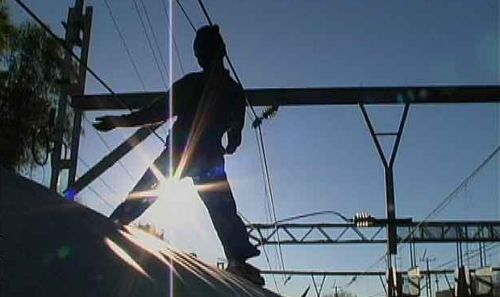A recent article in the New York Times about thrill seekers who use cityscapes as high-risk arenas brings to mind Barbara Vine/Ruth Rendell’s chilling novel King Solomon’s Carpet. The book’s title refers to the London Underground or Tube.
The New York Times article describes the activities and then moves quickly into the dangers:
Buildings become soaring peaks to climb, their rooftops high-risk plateaus separated by canyons to vault with a daring leap. A skateboarder can grab the bumper of a passing vehicle and add a thrill to a prosaic ride. And who needs ocean waves when one can clamber atop a subway and surf it to the next stop, even if it is illegal?
But sometimes these exploits do not go as smoothly as the imagination would have it, ending in tragedy.
Such was the case on Thursday when Tyreek Riley, a 15-year-old playing with friends on the roof of a four-story apartment building in Crown Heights, Brooklyn, tried to leap across an eight-foot gap to the rooftop next door. He missed, and plunged to his death in a concrete alley.
Rendell shows what novels do better than journalism, which is take us inside the experience. We learn first of all about the thrills of subway “sledging,” as it is called in the book:
In spite of the heat, [Jasper] understood why it was called sledging. This was what it must be like on a toboggan roaring down the snowy slope of a mountainside. A great exhilaration filled him. The train was going fast, rushing along now, and the clatter of it sang in his ears. He bounced a little, pleasantly, not alarmingly. Why had no one said it was like this? Why had no one told him how marvelous it was?
Jasper would have liked to yell and sing and shout, if he had dared lift up his head. He would have liked to stand on the roof of the train and leap along from car to car like one of the bad guys in that Western. But he dared not move, not this time, not yet, and he held on tight, lying there with his body ten times more thrillingly alive than he had ever known it.
A great joy possessed him as the train bore him on, on, on through the sunshine, down the line to Loughton.
Later in the book, however, we are taken inside a nightmare. One of the boys doesn’t want to venture onto the roof but is goaded up there by taunts of cowardice. We experience what happens next from Jasper’s vantage point:
The mouth of the tunnel received them, and for the first time Jasper was aware of the downward gradient, that the train was descending. Perhaps he noticed it because he was concentrating so hard on everything to do with the train, the behavior of the train, because he was so aware of Damon, who was unpracticed and had been afraid, on top of the car ahead.
He was concentrating but he was unprepared for what happened. Everyone in the car was unprepared. The train braked and gave one of those shuddering lurches which, if people are standing, are enough to knock them over. No one was standing in their car but at the second lurch they had to hang on to the seat arms to avoid being thrown on to the floor. One of the women cried out.
Time seemed to cease and there was silence. It endured and it did not. This might have been ten seconds which passed or ten hours. Afterward Jasper could not have said, except that the former was more likely. He was petrified by the silence, a silence that seemed outside this world and beyond time. His hands had fastened themselves to the arms of the seat and he had grown numb, his whole body was numb, but his brain raced.
From outside, up ahead somewhere, suddenly, came a scream, the like of which Jasper had never heard before. All the terror of every frightening thing in the world was in it. And it went on and on. The people in the car jumped up. Jasper stayed where he was. Jasper saw. He saw it come past the window, a mass of something dark and twisted, fighting the side of the car and screaming. He saw a foot stamp at the glass as the train tore it away and plunged on down into the deep, leaving the dying scream behind.
In short, don’t do it.


